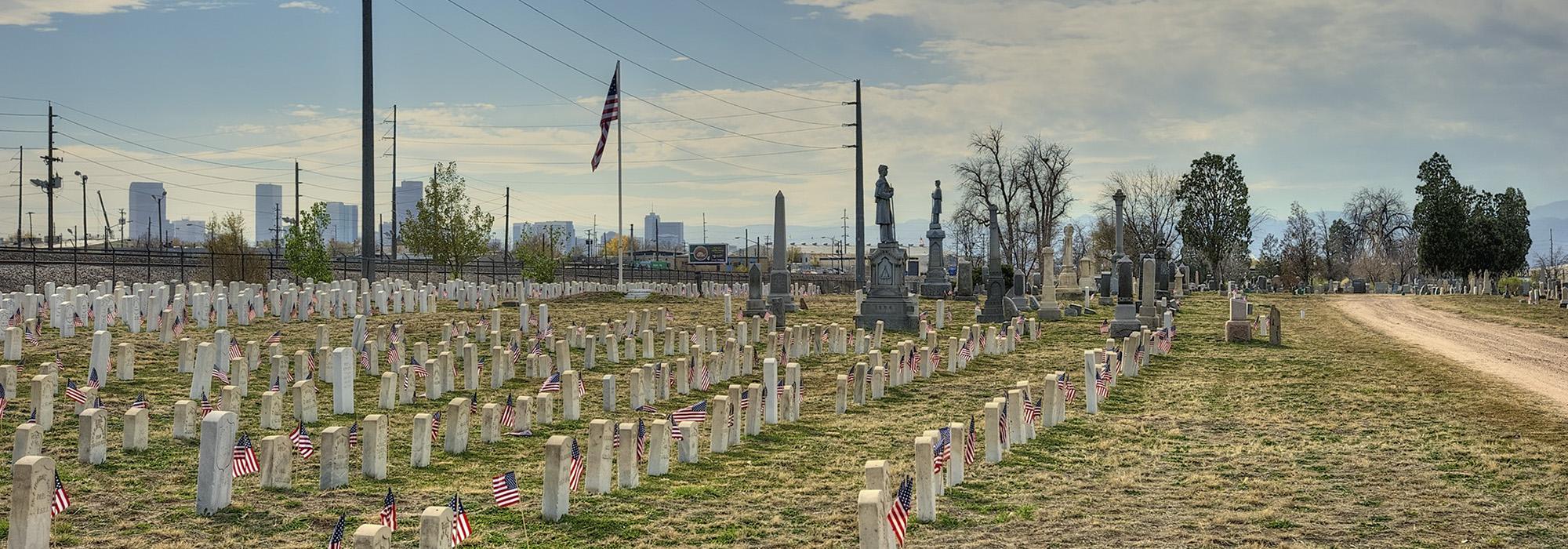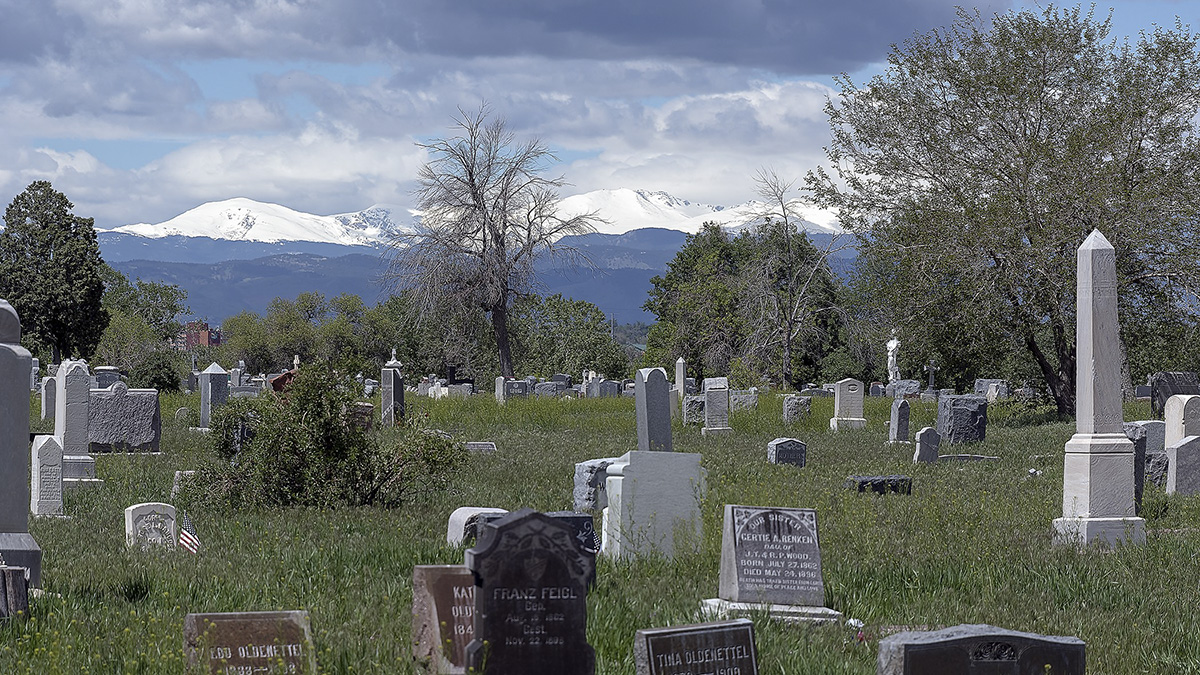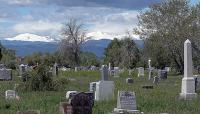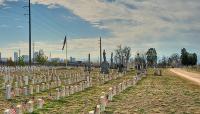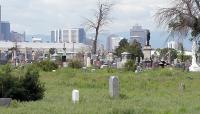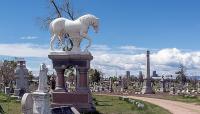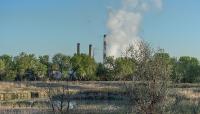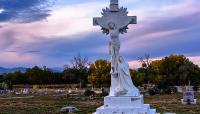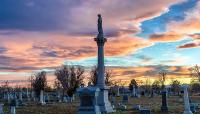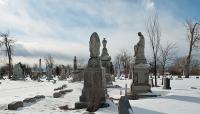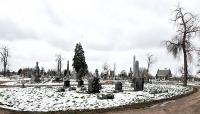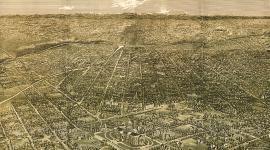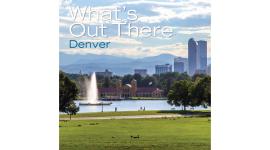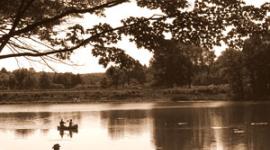Landscape Information
Founded by the Riverside Cemetery Association in 1876 in a tranquil location on the South Platte River, this cemetery downstream from Denver was a popular burial ground for wealthy families. In 1880, the Association expressed concerns about industrialization of the surrounding area. Even so, the mainline of the Burlington and Colorado Railroad was constructed adjacent to the site soon thereafter. Landscape engineer Harvey Lowrie was commissioned to lay out burial blocks, lots, and plots. Lowrie’s design for the rural cemetery featured an interconnected web of curvilinear and axial gravel roads emanating from a centralized radius of concentric drives. Improvements to the prairie setting, dotted in places with flowering trees and shrubs, were initiated by the families of the buried, who ornamented their plots with monuments of carved stone and white bronze. The wide roads segmented the cemetery into numerous sections of various size and shape, with the orientation of grave markers determined by the shape of each section.
In 1900, the Riverside Cemetery Association and the Fairmount Cemetery Association (founded in 1890) formed a partnership, and in 1925 the cemeteries merged operations. Since then, Fairmount has owned and managed the 77-acre Riverside property, which comprises some 66,000 interments. Although drought and increased industrialization have impacted the cemetery, it remains a large, publicly accessible, open space with views of the Rocky Mountains. Because of its proximity to the river and a large wetland, the Colorado Division of Wildlife designated it an Urban Wildlife Watching Area. In 1994, Riverside Cemetery was listed on the Colorado State and National Registers of Historic Places.



